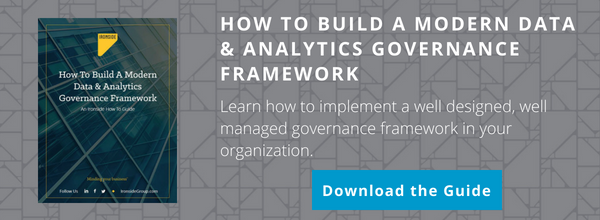What to Consider When Building Your Data Democratization Strategy
Data democratization is the ability of an organization to provide information to end users in an easy and effective way. The goal is to provide self-service of information to end users with minimal IT support. There are many things that can go wrong when rolling out data democratization projects. The purpose of this article is to identify potential issues and provide guidance on how to avoid them in the democratization process.
Access to Information
When companies want to embrace democratization, there can be impediments to the free flow of information. Corporate culture may require a change to rethink the way that information is made available. Traditionally, many organizations have built reporting solutions that provide standard reports that have gone through a thorough testing process to ensure accuracy. This raises two questions, “Are the users ready and willing to create their own reports?” and “Do they have the proper skills to perform these tasks?”
Successful democratization projects require data analysts who understand the information, training on the tools and users that are eager to use the self-service tools. Having users who can understand the metadata of the business and are properly trained can produce their own reports and perform analysis using the data.

Data Silos
Another obstacle to democratization is data silos. Many organizations have data that is owned by specific departments within the business that have not been made available to other departments. Having executive sponsorship is essential in breaking down these data silos and sharing the information across the business. The other problem with data silos is the lack of data integration between the silos of data. Data warehouses have been developed using data integration tools to bring data together and simplify the reporting process for the end users. These integration tools can bridge the gaps between the data silos and simplify the access to the information.
Business intelligence tools are usually implemented with a data warehouse to create a metadata layer with business friendly data names to help the end user understand and effectively use the information. Data warehouses and business intelligence solutions are only a part of the overall democratization strategy. The architecture needs to be defined as part of the design of the data democratization process. The data warehouse, MDM solutions, business intelligence, data quality, security, and training become different sub-projects within the overall strategy.
Master Data Management
Data quality is an important aspect of democratization. The simple truth is that end users will not use the information for analysis if they do not have confidence in the quality of their data. Master Data Management is an effective solution to solving and maintaining data quality issues.
There are 3 contributing factors to Master Data Management:
- People
- Process
- Technology
MDM implementations will require all 3 in order to be successful. People includes roles for data stewards and data owners. The data owner is responsible for the data, such as customer, product or organization attributes. The data steward is responsible for the day-to-day maintenance of the attributes and acts as the gatekeeper for any changes to the data. The second part of MDM is Process, which requires that there are well-defined processes for entering data, maintaining data and details for specific attributes. Part three, Technology, is leveraged to implement processes for data transformation, integration and cleansing.
Data Security
Data democratization relies heavily on the ability to secure data properly for end user access. In some cases, users are not allowed see certain data. As an example, financial data is usually very sensitive and in many cases users outside of finance will not have access to that information. This requires the development of reporting solutions in conjunction with user accounts to define what data is available to which users.
Another aspect is securing rows of data in the database for specific user groups. This requires the development of reporting solutions that only allows the users to see specific rows of data based on their credentials. One example of this is department reporting, where the reporting solution is made available to end users through the same application and the row data that is available to them is based on business rules that are defined and implemented in the application.
Developing the Strategy
Bimodal strategies should be considered in the overall data democratization strategy. Bimodal is defined as the practice of managing two separate but coherent styles of work: one focused on the predictability of the data and the other on data exploration. The first mode is designed to optimize data that is more predictable and well-understood. The goal is exploiting what is known about the data and presenting it in a usable format for the end users.
Mode 2 is focused on exploration of the data. The idea is to experiment with the data to solve new problems and optimize for areas of uncertainty. These initiatives often begin with a hypothesis that is tested and adapted during a process involving short iterations. Both modes are essential to create substantial value and drive significant organizational change, and neither is static. These are important facets to keep in mind as part of the democratization strategy.
Bringing It Together
Data democratization should be the goal of most organizations. There is great business value in the ability to provide information to end users in a timely fashion that will accelerate and improve the decision making processes. It is important to be aware of the hurdles you might face with successful democratization implementations and consider them as part of the process.
Breaking down data silos, such as building data warehouses that can be leveraged in advanced analysis, will provide the information in an integrated and usable format and potentially create a competitive advantage. MDM implementations will help provide clean and accurate data to end users for the decision making process. End user training on tools and the data will help reduce errors in reporting and improve adoption of democratization systems. Security must also be taken into account to limit access to sensitive information and provide data to end users that is tailored to their role within the organization. To learn more about data democratization in your organization, contact us today.
About Ironside
Ironside was founded in 1999 as an enterprise data and analytics solution provider and system integrator. Our clients hire us to acquire, enrich and measure their data so they can make smarter, better decisions about their business. No matter your industry or specific business challenges, Ironside has the experience, perspective and agility to help transform your analytic environment.






